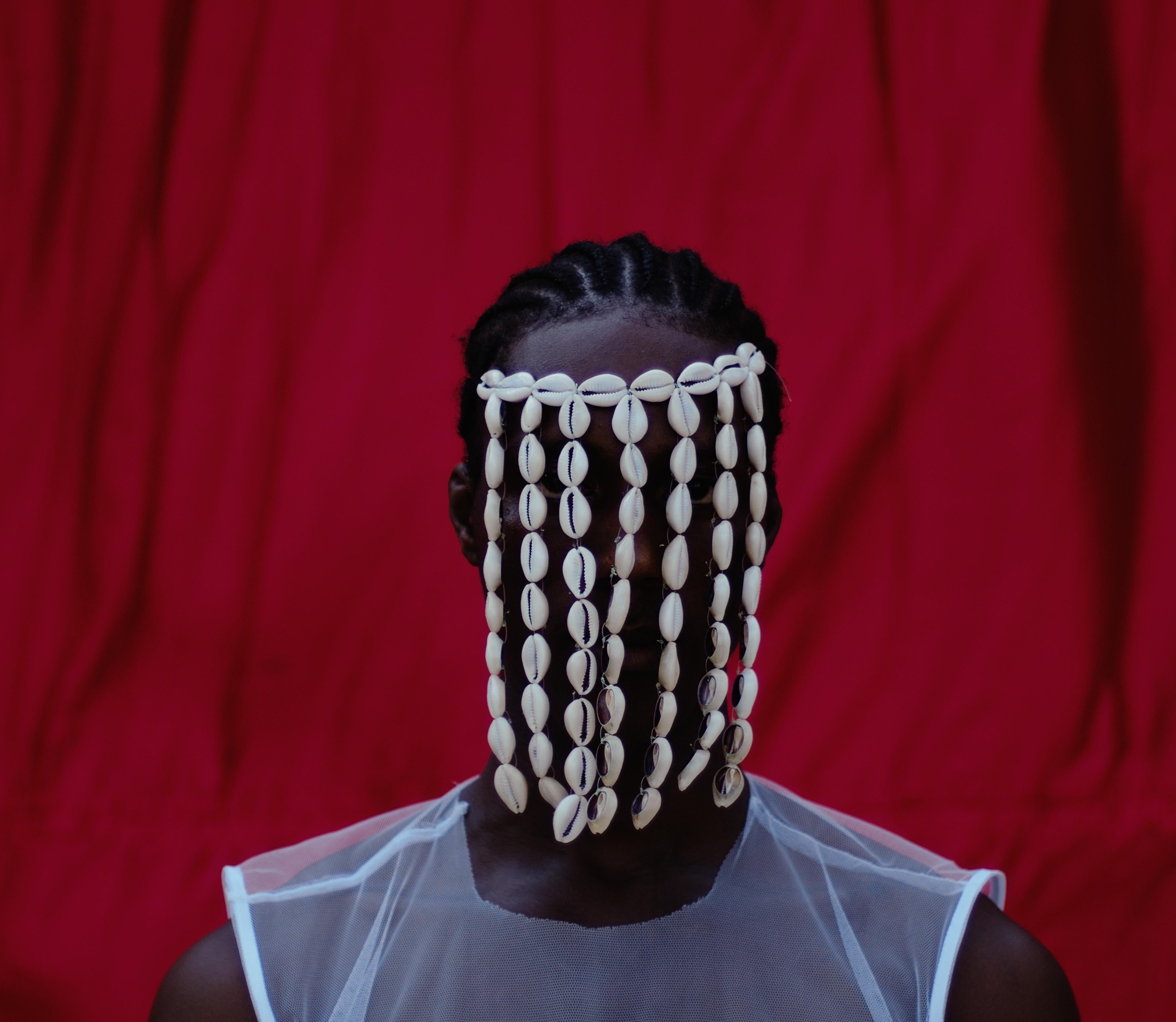
Padanci: Prestige, Power, and the Pulse of the Northern Nigerian Durbar
 Entering Gidan Rumfa ©unx-art 2024
Entering Gidan Rumfa ©unx-art 2024
The rhythmic thunder of hooves, the shimmer of embroidered robes, and the collective cry of “Ranka ya dede!”—May you live long!—announce one of West Africa’s most captivating cultural spectacles: the Durbar of Northern Nigeria. Biannually, during Eid al-Fitr and Eid al-Adha, the ancient emirates transform into theatres of colour and ceremony (2). The most iconic among them is Kano, where the festival becomes not merely a celebration, but a choreography. At the heart of it all is Padanci, the visual language through which authority, pride, and lineage are declared.
 Riders gallop across the square to greet the Emir during the Durbar ©Kumakonda Travel Blog
Riders gallop across the square to greet the Emir during the Durbar ©Kumakonda Travel Blog
 John Oyedemi "Master's Vault Serire: Royal People" 2018
John Oyedemi "Master's Vault Serire: Royal People" 2018
Padanci: The Language of Presence and Power
 The Emir of Kano ©unx-art 2024
The Emir of Kano ©unx-art 2024
In Hausa tradition, Padanci speaks long before a word is uttered. It is visible in the way a nobleman sits on a horse, in the angle of a turban, or the pace of a ceremonial parade. Padanci is not extravagance for its own sake; it is a culturally coded statement of nobility, allegiance, courage, and social rank (6). Every element of attire has meaning. The rawani—the turban—is one of the most important pieces of this language. A senior courtier may wear a single “bunny ear” protruding from his turban, signalling delegated authority from the Emir (7). Only the Emir and the highest kingmakers wear the double-protruded turban, a symbol of dual responsibility—political leadership and spiritual guardianship (7). Even the simpler white turban of Islamic scholars communicates humility, scholarship, and piety. In this society, a turban is not fashion—it is a constitution.
 The Emir - white turban with double protruding turban ©Kumakonda Travel Blog
The Emir - white turban with double protruding turban ©Kumakonda Travel Blog
The same symbolic detail extends to the horses. Saddles are dressed in silver ornaments and richly dyed cloths, while polished bridles shine beneath the sun. The regalia is meticulous to the last stitch, because a horseman represents more than himself; he represents centuries of dynasty (6).
A Tradition Forged in History
 The Durbar ceremony April 2024 ©Tina Valderrama
The Durbar ceremony April 2024 ©Tina Valderrama
The Durbar traces its history as far back as the fourteenth century, when Hausa kingdoms depended on cavalry for both governance and defence (2). Emirs summoned their horsemen to demonstrate readiness for war and loyalty to the throne. Over time, as peace replaced conflict, these martial gatherings transformed into ceremonial parades. The term “Durbar” comes from Persian, meaning royal court or audience (3), and became formalised during colonial rule. Yet, in spirit and practice, the festival remains deeply African—rooted in indigenous hierarchy, Islamic scholarship, and the aesthetics of royal theatre.
 The Entrance to the Royal Armoury ©unx-art 2024
The Entrance to the Royal Armoury ©unx-art 2024
Inside Gidan Rumfa: The Palace at the Centre of It All

Inside Gidan Rumfa - the Palace ©unx-art 2024
To understand the Durbar, one must understand the palace—Gidan Rumfa—the seat of Kano’s emirate for over 500 years (5). The palace is not a single building, but an architectural ecosystem. High mud walls form an enclosed world of courtyards, ceremonial halls, gardens, mosques, and stables. The first signal that you have arrived is the gate: monumental wood carved with geometric patterns and stained in red ochre (5). Guards stand rigidly in embroidered uniforms, and once they step aside, the noise of the city falls away. Inside, the architecture speaks in symmetry and intention—stucco reliefs curling into floral and abstract motifs, carved doors lined with Quranic inscriptions, and walls in earthen tones that keep the heat at bay (5).
 The Royal court - Palace guards in Red turbans ©unx-art 2024
The Royal court - Palace guards in Red turbans ©unx-art 2024
Visitors quickly realize that Gidan Rumfa is not designed for spectacle alone. It is designed to function. Courtyards allow airflow and gathering. Pathways manage the movement of officials, horses, and guests. The palace feels like a self-contained city with its own laws of rhythm and etiquette.
The Throne Room: Where Authority Becomes Space
 The entrance to the Throne room of the Emir
The entrance to the Throne room of the Emir
At the ceremonial centre of the palace sits the throne room, a solemn chamber reserved for audiences, judicial decisions, and state ceremonies (5). The throne is elevated—not as excess, but as clarity. Leadership in the Hausa emirate is both political and spiritual, so the architectural language reinforces hierarchy: visitors sit lower, approach slowly, and address the Emir with a ritual greeting. Rich carpets soften the floor, carved pillars draw the eye upward, and the atmosphere carries a kind of engineered silence. Every gesture here matters.

The throne room of the Emir's Palace ©Tina Valderrama 2024
Royal Horses and the Palace Stables
If the throne is the symbol of sovereignty, the horses are the symbol of power. The palace stables are clean, shaded structures lined with saddles, bridles, and embroidered coverings waiting for the next procession (6). Palace grooms bathe and brush the horses daily, feeding them millet and grasses to maintain the strength and sheen required for ceremonial work. Historically, horses were military assets (2). Today, they remain political language. When the Emir moves, he moves mounted. Authority does not walk—it rides.
John Oyedemi, "Master's Vault Series: Royal People" 2018
UNESCO Heritage Status

UNESCO Heritage certificate for Durbar in Kano
In 2024, the Kano Durbar was inscribed on the UNESCO Representative List of the Intangible Cultural Heritage of Humanity (4). It is recognised as the largest procession of decorated horses in the world, and as a living record of Hausa emirate systems, craftsmanship, and ceremonial hierarchy (4). UNESCO’s designation confirms what locals already know: the Durbar is not nostalgia—it is continuity.
Padanci on Canvas: John Oyedemi’s Artistic Lens

Dr. John Oyedemi in his Studio ©unx-art 2024
For Nigerian contemporary artist Dr. John Oyedemi, the Durbar is not simply a spectacle—it is artistic vocabulary. His impasto technique captures the thickness of regalia, the tension of galloping horses, and the movement of dust and sunlight (7). Where the human eye can only glimpse the split-second flash of colour and motion, Oyedemi translates it into permanence. His paintings document the living heritage of Padanci—power made visible, history made modern, tradition made unforgettable (7).
 John Oyedemi, "White Series: Royal Procession" 2024
John Oyedemi, "White Series: Royal Procession" 2024
A Legacy that Continues to Ride
To witness the Durbar is to see Northern Nigeria narrate its history without a single word. It is faith expressed through music, hierarchy expressed through attire, and identity expressed through motion. Despite modernization, political change, and shifts in society, the Durbar remains unbroken. It adapts, but does not erode. The thunder of hooves still shakes the parade ground. The banners still fly. The Emir still mounts his horse.
 John Oyedemi, "Royal Race" 2018
John Oyedemi, "Royal Race" 2018
Consider it a moving museum—one that does not live behind glass, but breathes among its people.
Discover more artworks inspired by the Durbar at unx-art.net.
Follow unx-art on Instagram and Facebook for behind-the-scenes stories, artist insights, and new works celebrating contemporary art across Africa.




